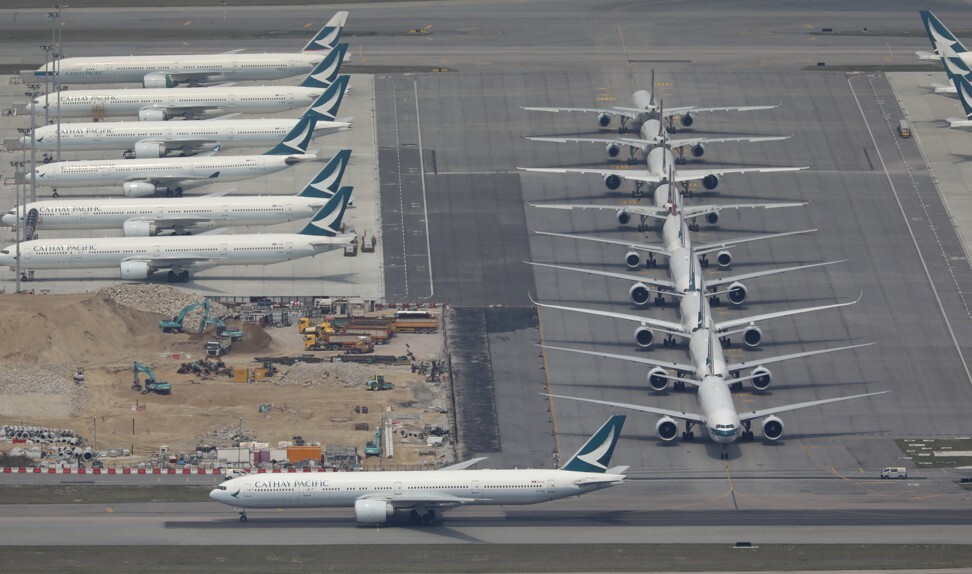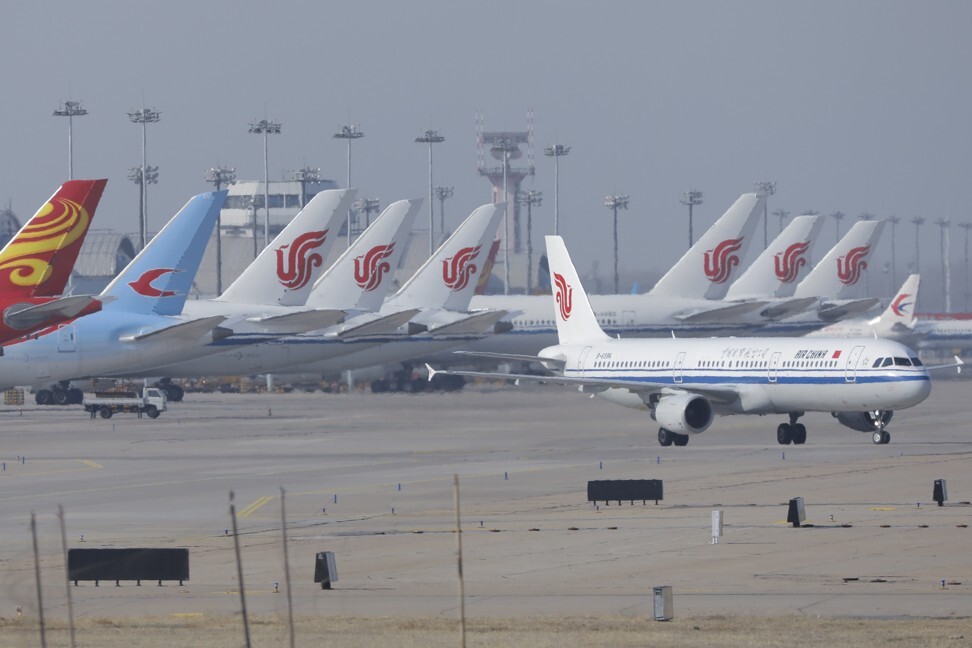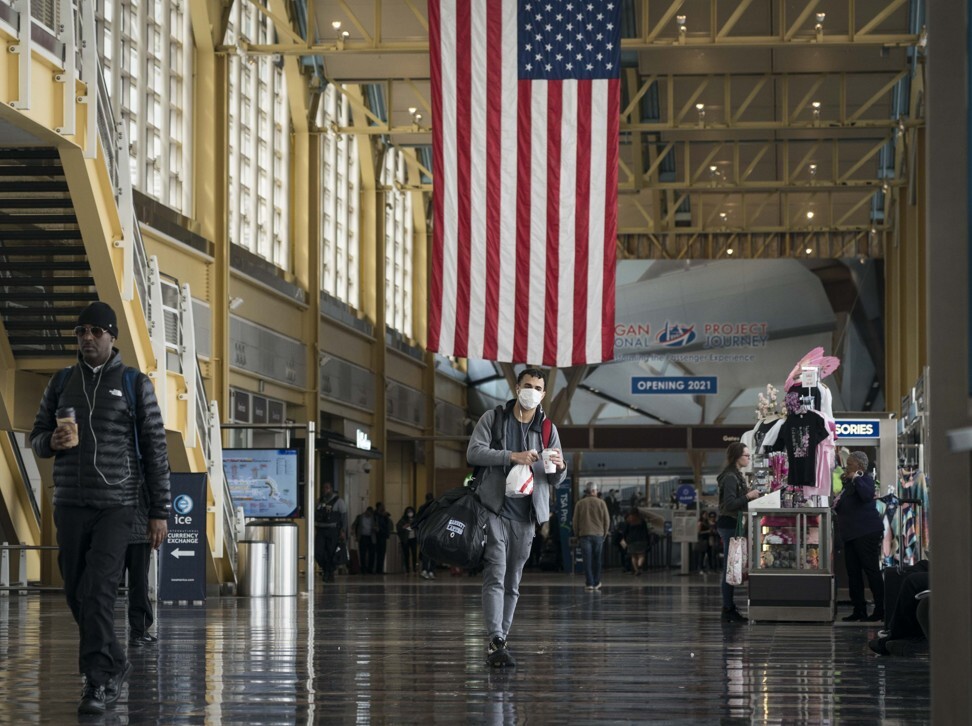
China’s aviation regulator backs off from a two-month row with US over American carriers’ access to lucrative US-China routes
- Shares of the country’s three largest state-owned carriers were mixed in Hong Kong and Shanghai bourses after the US decision overnight
- The Chinese aviation authority, responding to the industry’s lobby, will relax some restrictions from June 8
China’s government has backed off from a two-month row with the United States, giving US carriers access to some of the most lucrative routes in global aviation as the industry grapples with an unprecedented slump amid the coronavirus pandemic. Chinese airline stocks rose in Hong Kong but fell in Shanghai after the move.

The move could be a lifeline to Delta Air Lines, United Airlines Holdings and American Airlines Group, which had not been flying to China since February, when US carriers slashed their flights or stopped flying to China altogether just as the Chinese mainland became the first global epicentre of the pandemic. As many as 95 global carriers had halted services to China, the world’s second-largest aviation market, because of the outbreak.

Pilots at Delta and United turned down assignments on China routes in late January over concerns of catching the coronavirus. Chicago-based United, which typically flies a dozen daily services to Beijing, Chengdu, Shanghai and Hong Kong, stopped all flights to mainland China on February 13 until April 24, and flew for the last time to Hong Kong on February 8.
Since then, China became the first major economy to emerge from the coronavirus lockdown, while the US turned into the new epicentre, with 1.8 million confirmed cases and 107,000 deaths.
China’s current restrictions on inbound flights are mainly based on concerns over a second wave of Covid-19 infections, said Qi Qi, an associate professor at Guangzhou Civil Aviation College, stressing that any rebound in caseloads would overwhelm China’s ability to cope and impede its path to economic recovery.

“The CAAC’s announcement [today] was not aimed purely at American airlines but all foreign carriers,” said Qi, adding that the US restrictions amount to “bullying” tactics. “The implication of the action was multilateral, while the US restrictions for Chinese carriers are targeted and unilateral.”
The CAAC's response is a step that will ease the tensions, said Lei of the Institute of Aviation Research. “More behind-the-scene negotiations would come,” Lei said. “The US may not be satisfied. The American airlines may prefer other cities as landing destinations, and would want more flights to China and demand more equality.”
Infographics: Classification of China’s tiered cities
The shares of China’s three-largest state-owned carriers were mixed on the Hong Kong and Shanghai stock exchanges after the latest moves, which underscores the lopsided significance of the two markets to airlines of both countries.
“The US forced China to the aviation market more than a decade ago because American airlines were more competitive than Chinese airlines, which were underdeveloped,” VariFlight’s chief executive Zheng Hongfeng said. “As Chinese airlines’ capacity expanded in recent years, they are offering cheaper fares than US carriers, which makes US carriers more cautious, putting pressure on them to demand for more market opening from China.”
Air China had 104,528 available seats assigned for the US as of June 2019, counting the US as the second-most important out of the airline’s top 15 destinations, according to VariFlight’s data. Delta, the biggest US airline by market capitalisation, counted mainland China as 10th in its top 15 destinations, with 51,226 seats allocated to Chinese cities, the data showed.
Infographics: All you need to know about the coronavirus pandemic
China Southern operates a weekly service from its home base of Guangzhou Baiyun airport to Los Angeles, while Xiamen Airlines flies once a week to Los Angeles from Xiamen, and China Eastern flies once a week from Shanghai Pudong airport to JFK Airport in New York.
“Tension will still exist between the two countries if the US manipulates the aviation rights for use as an economic [bargaining] chip and then a political chip,” Qi said. “The current imbalance of the number of flights operated by China and US carriers are derived from the degree in which the pandemic was controlled in the two countries. Unless the US takes the disease under control as China did, the imbalance will continue.”

